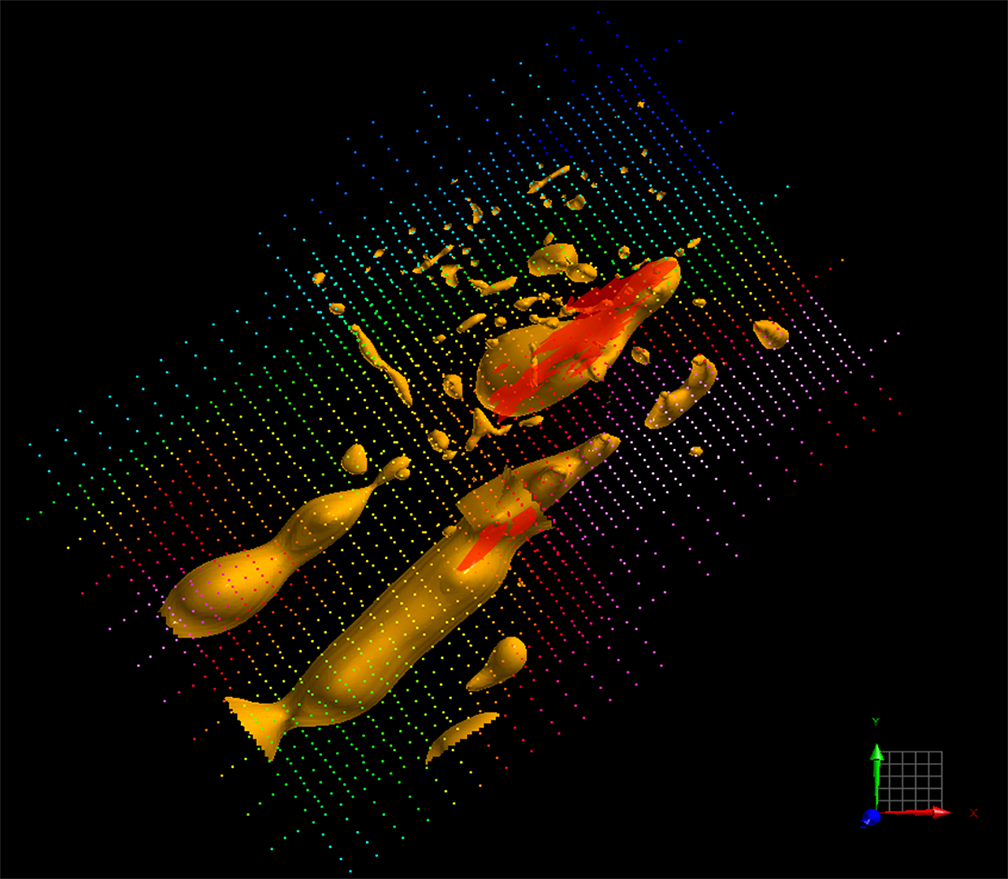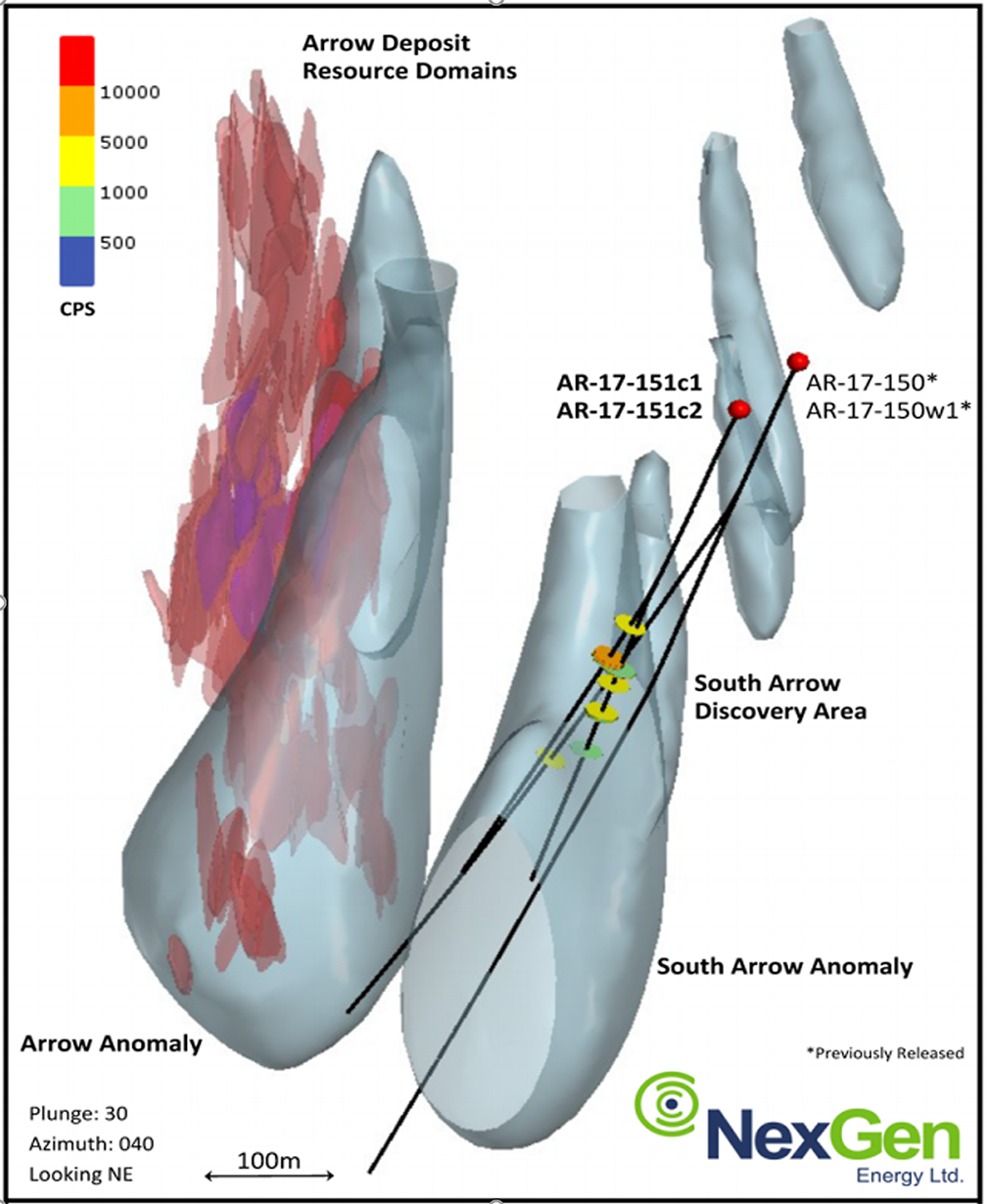
Arrow Uranium Deposit, NexGen Energy


Overview
Dias Geophysical successfully imaged alteration related to a known uranium deposit from 100 m depth to over 600 m depth. A similar conductive response 400 m south of the known deposit led to the discovery of the South Arrow uranium deposit.
Situation
Canada’s Athabasca Basin hosts the vast majority of high-grade uranium deposits. NexGen Energy’s Arrow deposit in Saskatchewan, Canada, is the largest undeveloped uranium deposit in the world. Direct detection of unconformity uranium deposits is virtually impossible with conventional geophysical exploration techniques. The DIAS32 DCIP survey was designed to image the alteration related to the high-grade uranium mineralization at Arrow, and by integration with other geologic and geophysical data sets, improve exploration efficiency.
- Unconformity-related uranium deposit
- Imaged alteration related to a high-grade, basement-hosted uranium deposit to 600 m depth
- The South Arrow deposit was discovered from the DIAS32 data set
DIAS32 Solution
A full 3D resistivity survey was completed across a 1.4 X 1.4 km area centered over the known deposit. A portion of the survey was completed over a large open-water lake. The multi-azimuth and multi-scale data set was processed and inverted to generate a high-resolution 3D resistivity model of the survey area from surface to 600 m depth.
Outcome
The DIAS32 survey successfully imaged the alteration related to the Arrow high-grade uranium deposit with a high degree of correlation. A similar response in the data 400 m south of the Arrow Deposit was drill tested and high-grade uranium mineralization was discovered. This discovery of the South Arrow deposit confirms the effectiveness of the resistivity method in the exploration for basement-hosted unconformity-related uranium deposits in and around the Athabasca basin.


